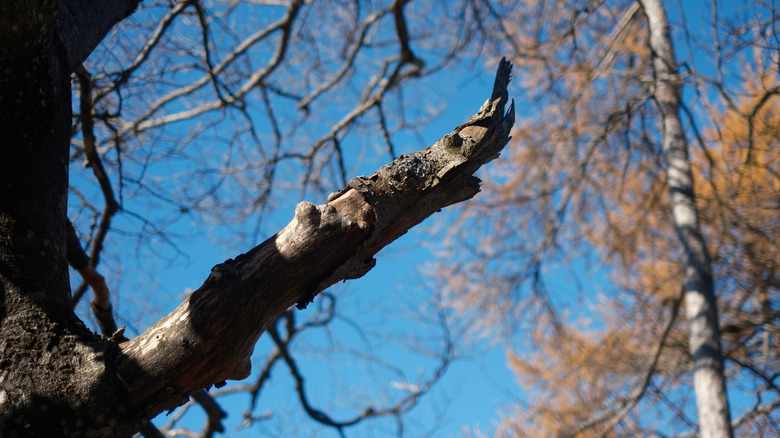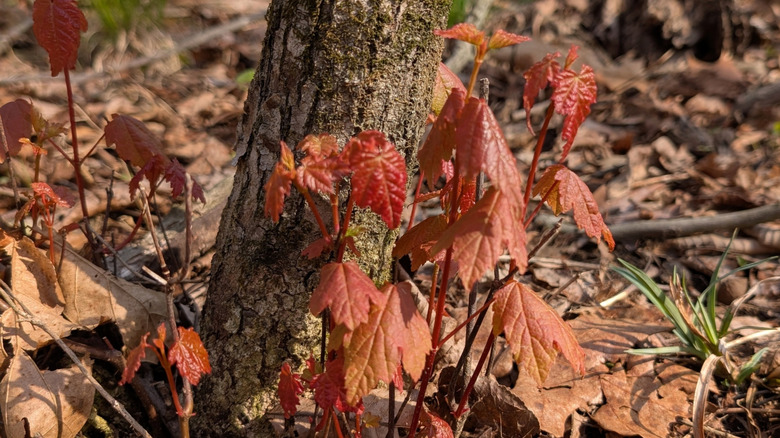The Mysterious Sprouts That Could Be Killing Your Tree (And How To Save It)
When you see little shoots growing under your trees, you may find it fortunate that the parent tree is providing you with baby trees. Unfortunately, those little shoots may harm and even kill your tree. The mysterious shoots are called suckers, and they grow out of the ground, either from the tree's buried roots (root suckers) or from the base of the tree (crown suckers). They shouldn't be confused with water sprouts, which are the shoots that develop from dormant buds on the branches or trunk of the tree. Both suckers and water sprouts can harm the tree and should be removed as soon as they appear to save the tree. Some species, like dogwood, maple, and linden, as well as most fruit trees, are most susceptible to sucker growth. Fruit trees are also prone to water sprouts.
Suckers can appear for a variety of reasons. Stress, severe pruning, damage to the roots or trunk from the lawn mower or a line trimmer, or even a too-vigorous root system, particularly on grafted trees, can create suckers. Significant damage to the crown of the tree can also cause suckers to form, which is why you should protect your trees from snow and ice damage. These shoots can provide habitat for insect pests or be a conduit to the tree for disease. Once a tree has begun developing suckers, it will most likely continue doing so. If that happens to your trees, you'll need to keep on removing the suckers to keep the trees healthy and alive.
Preventing and removing suckers from the base of your tree.
Suckers are the canaries in the coal mine, warning you that your tree is under stress, and if you choose to ignore them, the tree may decline or even die — either from the underlying stress or problems caused by these shoots. Herbicides are not recommended for sucker removal because they're not highly effective and they may damage the parent tree. Manual eradication of suckers is the best way to protect the tree — simply mowing them down won't get rid of them completely. Use pruners to cut the plantlet off at its base. To get to the base, you'll have to dig up enough soil to get to the spot where it's attached to the root. If you leave parts of the sucker behind, for instance by only mowing the surface part of the plant, those omitted parts will grow more suckers.
Keeping your tree healthy is the best defense against suckers. Learn how to identify a diseased tree. Water and prune appropriately, and since damaging the trunk makes the tree think it's being attacked and should produce new stems, steer clear with your mower and line trimmer. Adding a layer of mulch around the base of the tree will help prevent damage and benefit the tree in other ways. Keep the mulch layer shallow and never let it come in contact with the base of the tree. Pine straw, leaves, and compost are among the best ingredients to use in a DIY mulch.

